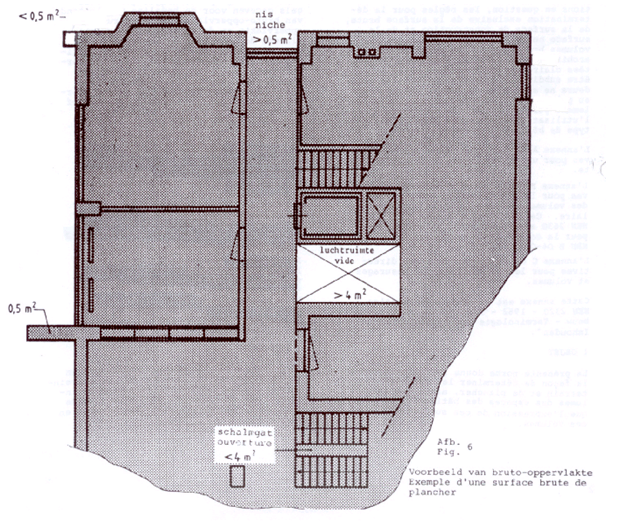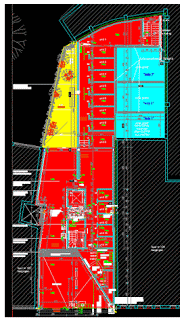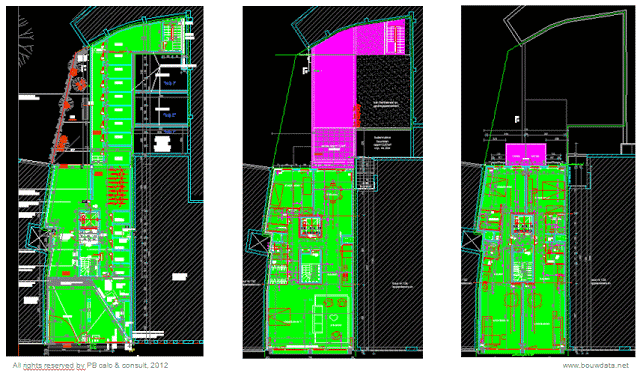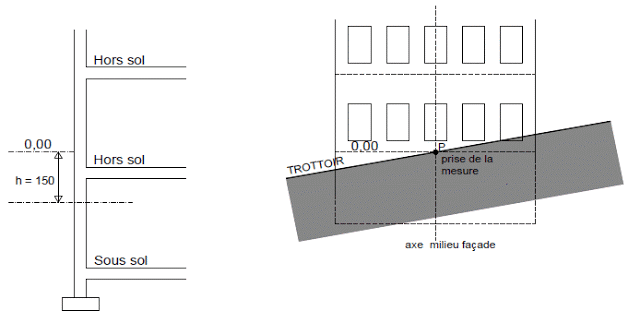Long time since I found time to write something on this blog. I still don't have a lot of time but sometimes one just has to create some :o)
Anyway, concerning BouwData: so far I explained the way the contractor looks at an estimation (material code) and the way the designer does (object code). As stated in one of my earliest writings on this blog, there is also a third party who has an interest in estimating: the owner or developper. For them there is the development code.
What is important to developpers ? m² floorspace !
And moreover: how many square meters is needed for construction ? And of the net floor space which remains, how much of it can be sold to clients in case of apartments or how much can be used for e.g. beds in a hospital ?
Again I looked for standards to help me out. In Belgium and the Netherlands we have a standard on how to measure surfaces : NBN B06-002 which is equal to the NEN 2630. The latter one is already replaced by the NEN 2580 when they defined the "Bouwbesluit".
In Germany there is the DIN 277 and there is also an ISO 9836 available.
In 2011 the EN 15221-6 came to life but this is a standard for facility management. In the Netherlands a commission stated that this is an entirely different business, so they hold on to their NEN 2580. And in Belgium ... well, here it is business as usual: every organisation defines his own way of measuring :o)
What do I do ? The NBN B06-002 is quite simple and resembles a lot the NEN 2580, DIN 277 and ISO 9836. So I stick to that.
In this blog some practical guidelines in a nutshell.
Gross Floor Area
in Dutch: Bruto Vloeroppervlakte (BVO)
in DIN 277 indicated by BGF

According to the NBN B06-002 you have to count the gross floor area on all levels. Thus also the levels partially or entirely underground, technical levels, roof terraces and attics where you can do something. You measure along the outer side of the facade on each floor just above the floor finishing.
Staircases, elevators and technical shafts, all belong to the BVO.
What doesn't belong to the BVO ?
- smaller parts with a section < 0,5m² on the outside of the facade
- free standing columns outside the facade with a section < 0,5m²
- voides with a surface > 4m²
- basements with a free height < 1,50m
- roof surfaces who are not used as a terrace
- open staircases outside the building
- non covered area's such as patio's with a surface > 4m²
- metallic gangways along the facade with maintenance as its single purpose
In the ISO 9836 this is the "total floor area". This standard makes a distinction between spaces who are totally surrounded by walls and spaces who are partially open to the surrounding area. The NEN 2580 makes even a further distinction between covered outside spaces and non-covered outside spaces, both when adjacent to the building. We don't look at gardens or sitting areas which are detached from the building.
Net Floor Area
in Dutch: Netto Vloeroppervlakte (NVO)
in DIN 277 indicated by NGF
- walls
when you take all the walls out of the measurement, you speak of net floor area
when you take only the bearing walls out, you speak of used floor area
in Dutch the latter one is called "gebruiksoppervlakte" and marked by GO - voides with a surface > 4m²
- parts of the room where the free height is < 1,5m
remark: in the DIN 277 these parts do belong to the net floor area - free standing column or a small wall when the groundsurface > 0,5m²
- shafts for technical ducts when the groundsurface > 0,5m²
Incidental alcoves on the outer walls with a groundsurface < 0,5m² are ignored.
Defined spaces and functions
In Belgium, every architect, creates names for the different spaces in a building. Sometimes he or she is consistent over all his/her projects, sometimes they like to invent names for every new project.
One could look at column 9 of table 0 of the SfB to define spaces but again, as with table 2 and 3 for the material code, I found the names in the Dutch "Bouwbesluit" more related to daily practice.
The DIN 277 roughly devides the net floor surface into:
- usefull surface
- technical spaces
- spaces for traffic
- rest surface (with the free height < 1,5m)
They defined following spaces:
1 toilet
2 bathroom
3 technical spaces
4 spaces for traffic
5 storage of bicycles
6 storage of garbage
7 elevator shafts
8 space used by people
9 undefined space (is the same as the "rest surface" of the DIN 277)
Next to defined spaces they have defined functions for the use of spaces:
1 living
2 meeting
3 captivity
4 health
5 industry
6 office
7 lodging
8 education
9 sports
10 shopping
11 other functions where people are not constantly present
Development Code
So, how do I glue this and other questions concerning floor surfaces together into one code ?
When I receive a plan in a design & build project, I first check the terrein surface. Believe it or not but it happened that a part of the building was designed on the ground of the neighbour !
The total terrain surface (TO) can be devided into categories and is to be marked on a plan:
- surface to be build on (BTO - red), measured according the NBN B06-002
- surface to become a garden (ATO)
this garden can be part of the community (ATO_C - yellow) or privately sold to one of the owners of the complex (ATO_P - blue) - surface left as it is (OTO - not coloured)


Since the defined functions are only related to the defined space nr 8 "space where people remain", I use the code 8.01 for living, 8.02 for meeting, etc.
In the category 8.11 I make further distinctions:
- 8.11a garage
- 8.11b storage
- 8.11c changing rooms
- 8.11z other functions
Each room/function has again its own distinct color to use on plans. In this way I develop a visual "feeling":

For developers it is important to make a distinction between floor levels under the ground and floor levels above it. However, the standards don't give any answers when the soil isn't horizontal. The European Commission uses for his own buildings following method:

Level 0.00 on the outside of the facade is the level of the foothpad in the middel of the facade.
The floors who are situated between this outside level 0.00 and 1,50m below it, are considered "above groundlevel".
The Uniformat Classification uses A to mark the substructure en B to mark the superstructure and shell. In the development code I "borrow" this A and B.
Another important issue for developpers is to know the ratio between spaces used for the community and spaces to be sold to several owners. The first space I mark with a "C" and the latter with a "P".
An exemple of the Development Code: ACi8.11a
- A : the space is to be found under groundlevel
B is above groundlevel
- C: the space is used by the whole community of owners
P is space exclusively for a private owner
- i: the space is completely surrounded by walls
e is outer space adjacent to the facade
- 8: space used by people
see above for the other defined spaces
- 11: other functions where people are not constantly present
see above for the other defined functions
- a: garage
Kind regards,
Peggy
